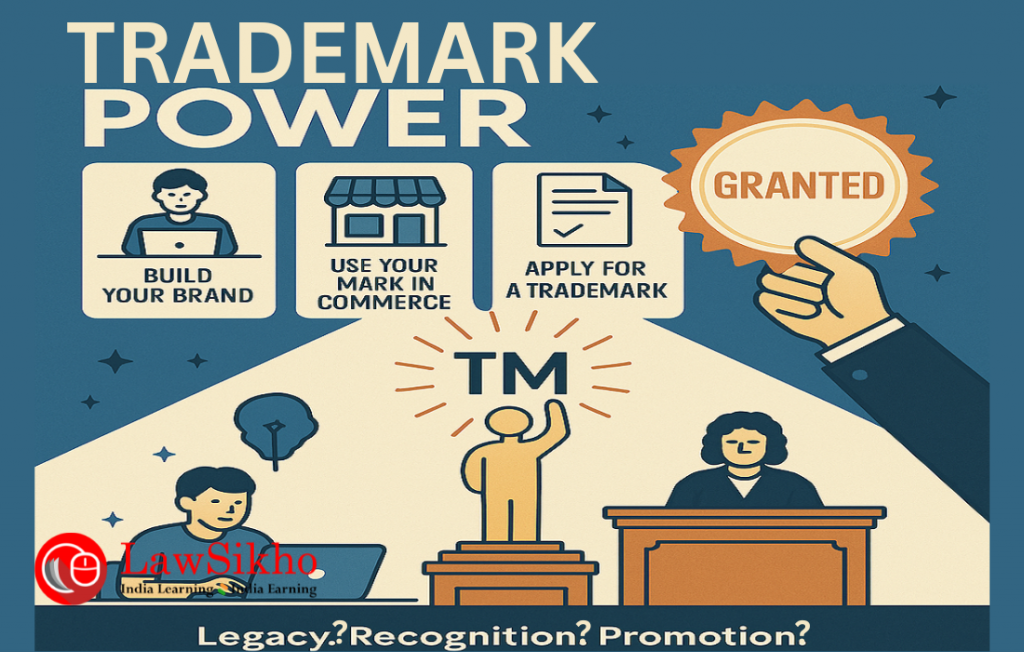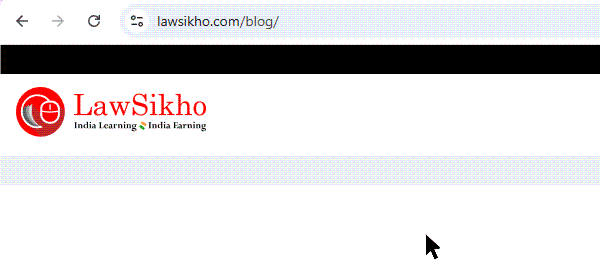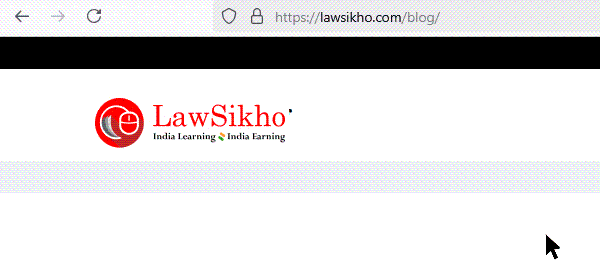In this article, I will outline the process of obtaining a well-known trademark status in India. This article breaks down legal criteria under the Trade Marks Act, navigates the application process, and compares judicial and administrative routes using real-world case studies. Whether you are an IP lawyer, brand owner, or just curious about trademark law, this piece demystifies the legal path from popularity to protection.
Table of Contents
Introduction
On March 11, 2025, the Delhi High Court officially recognised the “Taj” trademark, owned by the Indian Hotels Company Limited (IHCL), as a well-known trademark under the Trade Marks Act, 1999. This designation provides the brand with enhanced legal protection, even in unrelated industries, safeguarding it against unauthorised use and infringement
When this happened, for Ishaan Malhotra, founder of a wildly popular Indian fusion restaurant chain, it wasn’t just another headline; it was a spark.
He stared at the article on his phone while sipping filter coffee at one of his outlets. The recognition of “Taj” wasn’t just about a name; it was about legacy, legal muscle, and being untouchable in the business of brands.
That is when it hit him, “Could my brand be next?”
Ishaan’s restaurant chain, “MasalaTrail”, had grown from a single Mumbai outlet into a 50-location powerhouse known for reinventing Indian street food with global flair. The restaurant had grown in popularity steadily, and he continued to open restaurants in several cities in India. Customers adored it, food critics sang praises, and influencers would pop by frequently.
But popularity was not enough. Ishaan knew that in the world of IP, goodwill needs legal guardrails. If MasalaTrail was to become a legacy brand, it needed more than buzz, it needed protection. Specifically, well-known trademark protection.
What is a well-known trademark?
“Technically speaking, Ishaan,” I said, as I flipped open my laptop, “a well-known trademark is a mark that the general public associates with specific goods or services, even if they have not directly used them.”
We were seated in a corner booth at MasalaTrail’s flagship outlet in Mumbai. The aroma of ghee-roasted makhan buns filled the air, but Ishaan was all ears.
“It is not just about having a trademark,” I continued. “It is about having a trademark that means something. That resonates so strongly with people that even if someone tried to use your name in a totally different industry, like shoes or beauty products, they would immediately think, ‘Hey, that is MasalaTrail, the restaurant!’”
Ishaan nodded slowly, stirring his coffee. “So it is like… super trademark status?”
“Exactly,” I said. “The legal term comes from section 2(zg) of the Trade Marks Act, 1999. It defines a well-known trademark as one which, in the mind of a significant section of the public, connects the goods or services to the original brand, even without them directly engaging with it.”
This is what a trademark is according to section 2(zb) of the Trademark Act, 1999, –
(zb) trade mark means a mark capable of being represented graphically and which is capable of distinguishing the goods or services of one person from those of others and may include shape of goods, their packaging and combination of colours;
And well-known trademark is under section 2(zg) where it says –
well known trade mark, in relation to any goods or services, means a mark which has become so to the substantial segment of the public which uses such goods or receives such services that the use of such mark in relation to other goods or services would be likely to be taken as indicating a connection in the course of trade or rendering of services between those goods or services and a person using the mark in relation to the first-mentioned goods or services.
“Like how everyone knows TATA, even if they have never bought a car or stayed in their hotels?” Ishaan asked.
“Spot on. And just like the court did with Taj, if we play this right, we could get MasalaTrail on that list.”
I opened some images on my laptop and turned to Ishaan, “You see these? You can recognise them, right?”
“Well, yes. Merc, Lacoste, and Warner Bros.”
“Yes! And what if I ask you to think about Lego’s logo? You can see it, right?. It is because these marks are known so well by people.”
“Your brand, too, is known all over India, and people immediately recognise your brand when they see the mark. But let us take a look at what all we need to go over for yours to be applicable.”
Boxes to be ticked
I had a PDF of the Trade Marks Act open on screen, and a highlighted section blinked at the top, section 11(6).
“This is where it all begins.”, I said.
Section 11(6) – The Core Criteria
(6) The Registrar shall, while determining whether a trade mark is a well-known trade mark, take into account any fact which he considers relevant for determining a trade mark as a well-known trade mark including–
(i) the knowledge or recognition of that trade mark in the relevant section of the public including knowledge in India obtained as a result of promotion of the trade mark;
(ii) the duration, extent and geographical area of any use of that trade mark;
(iii) the duration, extent and geographical area of any promotion of the trade mark, including advertising or publicity and presentation, at fairs or exhibition of the goods or services to which the trade mark applies;
(iv) the duration and geographical area of any registration of or any application for registration of that trade mark under this Act to the extent that they reflect the use or recognition of the trade mark;
(v) the record of successful enforcement of the rights in that trade mark, in particular the extent to which the trade mark has been recognised as a well-known trade mark by any court or Registrar under that record.
“This section lays out what the Registrar must consider when deciding if a trademark is well-known. Think of it like a checklist.”
I listed them one by one:
- Extent of recognition among the public
“How many people know your brand? Not just in your city, but across India, or even internationally. With MasalaTrail, the influencer videos and food blogs help a lot here.”
- Duration, extent and geographical area of use
“How long have you been using the trademark, how widely has it been used, and in what regions. The longer and broader, the better.”
- Extent of promotion
“This includes ad campaigns, press coverage, social media following, collaborations with celebrities, anything that shows you have built public awareness intentionally.”
- Registrations or applications in India or abroad
“If you have already registered or applied for your trademark in India and other countries, that strengthens your case.”
- Successful enforcement
“Have you ever enforced your trademark rights? Won an opposition, sent a cease-and-desist, or fought an infringer? If you have defended your brand, that is big.”
Ishaan raised an eyebrow. “So, we basically have to prove that MasalaTrail is not just a restaurant chain, it is a brand that lives rent-free in people’s heads?”
“Exactly,” I grinned. “It is not just about paperwork. It is about showing you have earned your place in the public’s imagination.”
Section 11(7) – International fame counts too
“If MasalaTrail is known outside India,” I continued, “like among NRIs in Dubai or London, that counts too. Section 11(7) says even foreign recognition can help determine a mark’s well-known status in India.”
Section 11(8) – Registration ≠ recognition
“Here is the twist: even if your trademark is not registered, the Registrar can still declare it well-known. That is how powerful this status is. You just need to show recognition.”
Section 11(9) – No need for use in all classes
“Another myth,” I said, “is that you must be using your mark in every class of goods or services. But 11(9) makes it clear, you don’t. Your mark can still be declared well-known even if it is only used in, say, Class 43 (restaurants) and not others.”
Ishaan scribbled notes in his journal. “Okay, so if I want MasalaTrail to be like Taj, I need to show long-term use, massive public recognition, national media presence, maybe a few enforcement actions… and possibly international buzz?”
“Exactly. And once we have gathered all that,” I said, “we can go two ways: ask the Registrar to include it in the well-known list under Rule 124 or wait for a court to declare it during litigation.”
Rule 124 of Trademark Rules, 2017 –
Determination of Well Known Trademark by Registrar. — (1) Any person may, on an application in Form TM-M and after payment of fee as mentioned in First schedule, request the Registrar for determination of a trademark as well-known. Such request shall be accompanied by a statement of case along with all the evidence and documents relied by the applicant in support of his claim.
(2) The Registrar shall, while determining the trademark as well-known take in to account the provisions of sub section (6) to (9) of section 11.
(3) For the purpose of determination, the Registrar may call such documents as he thinks fit.
(4) Before determining a trademark as well-known, the Registrar may invite objections from the general public to be filed within thirty days from the date of invitation of such objection.
(5) In case the trademark is determined as well-known, the same shall be published in the trademark Journal and included in the list of well-known trademarks maintained by the Registrar.
(6) The Registrar may, at any time, if it is found that a trademark has been erroneously or inadvertently included or is no longer justified to be in the list of well-known trademarks, remove the same from the list after providing due opportunity of hearing to the concerned party.
Ishaan leaned back in the booth, thoughtful. “Let us go the Registrar route. I don’t want to wait for a court case.”
“Yes, another advantage is that under section 11(10), the Registrar must protect well-known trademarks by refusing or cancelling registrations of similar marks, considering public knowledge and potential confusion.”, I said.
How to apply for a well-known trademark?
The next day, Ishaan was back in my office, a folder full of campaign reports and press clippings under one arm. “Alright,” he said, settling into the chair across my desk, “I want to apply. What do we need to do?”
I smiled and said, “Good. That is the formal process under Rule 124 of the Trade Marks Rules, 2017. It is straightforward on paper, but we need to be thorough.”
I opened a new tab on her screen, pulled up a document titled Form TM-M, and began to explain.
Step 1: Fill form TM-M
“This is the form we use to make a ‘Request for Determination of a Trademark as Well-Known’. We will file it electronically through the IP India portal.”
Ishaan peered at the form. “Looks simple.”
“It is deceptively short,” I said. “Most of the work isn’t in the form, it is in the evidence you attach with it.”
Step 2: Pay the fee
“Okay, so registration for a well-known trademark is quite expensive. There is a government fee of ₹1,00,000 to file this,” I said. “The fee is non-refundable, but applicants can appeal a rejection under section 91 to the Intellectual Property Appellate Board or seek judicial review, though refunds are rare.”
Ishaan nodded. “Okay, understood”
Step 3: Submit detailed evidence
I flipped open a checklist. “Here is what we will need to include with the form. Each of these is crucial.”
“But before we get to that, have you thought about why Taj got its well-known mark? Let me tell you.” In the case The Indian Hotels Company Limited v. Gaurav Roy Bhatt, 2025, the court recognised –
Legacy and longevity: IHCL has been using the “Taj” mark since 1903, starting with The Taj Mahal Palace in Mumbai.
Global presence: The company operates over 350 hotels across 13 countries, establishing a significant international footprint.
Public recognition: The brand has achieved substantial goodwill and recognition among consumers worldwide.
Marketing and promotion: IHCL has invested heavily in promoting the “Taj” brand, contributing to its widespread recognition.
“So let us see what we can do for you.”
- Trademark registration certificate(s) –
“If your mark is already registered in India or elsewhere, we include those. Remember, you filed TM-A? And got your name and logo registered? Include all those certificates here.”
- Proof of use
“Invoices, franchise agreements, business expansion data—anything that shows how long you have been using the mark, and how widely.”
- Advertising, promotion, press coverage and awards
“We include ad spend figures, digital marketing reports, collaborations, social media statistics, and screenshots of influencer shout-outs.”
“We can also include newspaper clippings, food magazine features, and any awards MasalaTrail has won.”
- Consumer recognition
“If you have conducted a survey to show public recognition, we will include that. Otherwise, testimonials and customer reviews also help.”
- Legal enforcement documents
“If you have ever sent cease-and-desist notices or won an opposition or infringement case, that goes in too.”
- Market share data
“Any statistics showing how MasalaTrail compares with other restaurant brands, revenue figures, growth reports, etc.”
- Board resolution (if applicable)
“If the brand is held by a company, we attach a board resolution authorising the filing.”
Ishaan blinked. “That is… a lot.”
I smiled. “Yes. But remember, we are not just registering a name. We are proving that your brand is part of public consciousness. The Registrar will review every document to make sure it meets the threshold.”
Step 4: Examination and publication
“Once we file the form with all the documents,” I continued, “the Registrar will examine it. If they are satisfied, they will publish your brand name in the Trademarks Journal.”
“Then it is official?” Ishaan asked.
“Almost. The Journal invites objections from the public. If no one opposes, your trademark gets added to the List of Well-Known Marks maintained by the Trade Marks Office.”
Step 5: Lifetime listing
“Once listed,” I said, “MasalaTrail gets special protection. You can stop infringers even in totally unrelated industries. Think perfumes, clothes, bottled water, anyone trying to ride your brand’s goodwill can be stopped.”
Ishaan looked out the window, imagining a day when no knockoff ‘MasalaTrail Tea’ could pop up on shelves in another country. “Let us do it,” he said.
A step-by-step look at form TM-M
Back in my office, Ishaan was flipping through a printed copy of Form TM-M. “Okay, so what exactly do we write in this form?” he asked.
I nodded and pulled up the online version on the IP India portal.
“Here is how it goes.”
Basic structure of form TM-M
I have mentioned the explanation in red.
1. Nature of request
Select: ‘Request for inclusion of a mark as well-known trademark’
“This drop-down tells the Registrar exactly what we are filing for,” I explained. “It is not a general TM-M form, it is specifically under Rule 124.”
2. Applicant details
Name: MasalaTrail Hospitality Pvt. Ltd.
Address: Registered office address of the company
Email & Phone: Official contact details
“If you are filing as an individual, your name goes here. Since MasalaTrail is a registered company, we will use the company details.”
3. Agent details (If filed through a lawyer or trademark agent)
Agent Code: Insert trademark agent code, if any
Name & Address of Agent: Suma Das, IP Counsel
“This is where I come in,” I said. “We include my details and attach the Power of Attorney, which you will sign.”
4. Grounds for inclusion as a well-known trademark
“This is the most important section,” I said, tapping the screen. “It is where we write our case, almost like a cover letter to the Registrar.”
“The applicant respectfully submits that the trademark ‘MasalaTrail’ qualifies as a well-known trademark under section 11(6) of the Trade Marks Act, 1999, based on its extensive use, nationwide reputation, media coverage, consumer recognition, and promotional activities across India and internationally. The brand has been in continuous commercial use since 2015 and operates over 50 restaurants nationwide. The enclosed documents provide evidence of the brand’s recognition, enforcement history, and association with the applicant’s goods and services.”
5. List of supporting documents (uploaded as attachments)
I handed over a document checklist to Ishaan. “We will scan and upload all of these as annexures, and label them clearly.”
Annexure 1: Trademark registration certificate (India and foreign, if any)
Annexure 2: Proof of continuous use – invoices, expansion plans, restaurant photos
Annexure 3: Advertising and promotional materials
Annexure 4: Press articles, awards, recognitions
Annexure 5: Legal notices/enforcement actions
Annexure 6: Customer testimonials and online reviews
Annexure 7: Market share reports, analyst mentions
Annexure 8: Board resolution (if company-owned)
Annexure 9: Power of Attorney for the agent
“We will write a short index and refer to each annexure in the main submission,” I added. “Keep it professional, factual, and clean.”
6. Declaration and signature
Finally, Ishaan would sign the declaration confirming the facts submitted, and I would sign as the authorised agent.
Filing
“Once everything is uploaded and the ₹1,00,000 fee is paid online, the application is submitted. Then, we wait.”
“For how long?” Ishaan asked.
“There is no fixed timeline,” I admitted. “Could be a few months, mostly 6 – 12 months. If they are satisfied, they will publish it in the Journal. If they need more details, they will ask.”
The judicial route: When recognition comes from courtrooms
Later that evening, Ishaan and I were taking a walk, still chatting about the strategy.
“But,” Ishaan said, “what if I had not filed this application? Could I still be recognised as a well-known mark?”
“Yes,” I nodded. “That is the judicial route. A court can declare a trademark well-known during litigation, usually in infringement or passing-off suits.”
When does this happen?
“It usually comes up when someone tries to copy your name or logo. If you sue them for infringement, and the court finds that your brand is so well-recognised that its use in any class would cause confusion, they can declare your mark as ‘well-known’ in their judgment.”
Examples of judicial recognition
“Want a few real-life examples?” I smiled.
- Haldiram India Pvt. Ltd. v. Berachah Sales Corporation (2024) – The Delhi High Court declared ‘Haldiram’s’ well-known.
- G.D. Pharmaceuticals v. Cento Products (2024) – The Delhi High Court recognised ‘Boroline’ as a well-known trademark.
- Tata Sons Ltd. v. Manoj Dodia (2011) – The Delhi High Court declared TATA as a well-known mark, even though the infringer used it for different products. It recognised “Tata” as well-known due to its extensive use and reputation.
- Infosys Technologies v. Jupiter Infosys (2007 SC) – Infosys was declared well-known based on long-standing reputation and global reach. It protected “Infosys” against dilution.
Pros and cons of the judicial route
Pros:
- No ₹1,00,000 fee
- Direct declaration in the judgment
- Helps during actual infringement disputes
Cons:
- You have to be in litigation
- Time-consuming and uncertain
- Recognition may be limited to specific facts of that case
I concluded, “So if you do not proactively apply through the Registrar, your brand might get well-known status through court. But that usually happens during a fight. And not to mention, it is rare. It fully depends on case-specific evidence. The Registrar route is cleaner and preventive.”
Ishaan nodded. “No more waiting for a fight. Let us file.”
What happens after?
Months passed.
One afternoon, as monsoon clouds rolled over Mumbai, I was going through the trademark journal and spotted it. Would Ishaan have missed the notification? I called Ishaan and exclaimed, “Check the latest Trademarks Journal!. Page 47.”
Ishaan pulled it up on his laptop and scrolled.
There it was.
MasalaTrail – Declared as a Well-Known Trademark
He stared for a long moment, then leaned back and let it sink in.
“Congrats,” I said. “You have joined a very elite list.”
What does it mean for the restaurant chain now?
Over coffee later that evening, I explained the real benefits, beyond the fancy label.
- Protection across all classes – “Even though your restaurants are in Class 43, your well-known mark now gets protection in every class, Ishaan,” I said.
“So someone can’t start ‘MasalaTrail Tea’ in Class 30 or ‘MasalaTrail Apparel’ in Class 25?”
“Exactly. If it causes confusion or looks like it is cashing in on your reputation, you can stop them, even if you don’t sell tea or clothes.”
- No need to prove goodwill every time – “Before this,” I continued, “you had to prove your brand’s popularity in every single infringement case. Now, that is settled. The Registrar has acknowledged it. You can directly use that declaration in court.”
- Easier enforcement at the registry – Ishaan raised an eyebrow. “So oppositions?”
“Way stronger now. If someone tries to register a deceptively similar mark, the Registry is more likely to refuse it at the examination stage itself, because your mark is officially well-known.”
- Global leverage – “And this can support international protection too,” I added. “While India’s list of well-known trademarks is not binding in other countries, many, especially Common Law jurisdictions, may take it into account. Plus, under the Paris Convention and the TRIPS Agreement, member countries are required to provide protection to well-known trademarks, even if they are not registered locally.”
- Brand value and investor confidence – Ishaan smiled. “This is more than legal. I can already hear my branding guy preparing a new pitch deck for investors.”
“Well-known status is like a badge of honour. It signals that your brand has arrived, both in the market and in the eyes of the law.”






 Allow notifications
Allow notifications
